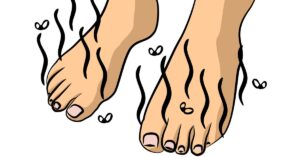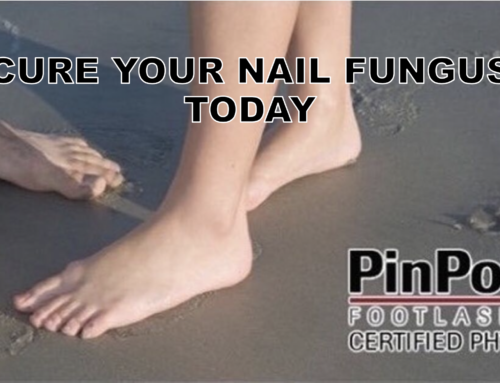The cause of nasty-smelling toenails can be tricky sometimes. Nasty-smelling toenails can be both embarrassing and uncomfortable, often signaling an underlying issue that needs attention. While occasional foot odor is normal, a persistent foul smell coming from the toenails usually indicates something more serious. It may stem from infections, poor hygiene, or environmental conditions that allow bacteria or fungus to thrive. Understanding the root causes is essential for preventing further complications and restoring healthy feet. With proper care and early intervention, most causes of toenail odor can be managed effectively.
Nasty-smelling toenails
A nasty-smelling toenail is often caused by fungal infections. Toenail fungus thrives in warm, moist environments, such as sweaty shoes or damp socks. As the fungus spreads, it breaks down keratin in the nail, releasing foul odors. Poor foot hygiene can make the infection worse. Not drying feet properly or wearing the same shoes daily traps moisture and encourages fungal growth.
Bacterial infections can also create a bad smell. When bacteria enter through cracks or damaged nails, they multiply and release unpleasant odors. Wearing tight footwear can restrict airflow and increase sweating. Medical conditions like hyperhidrosis also cause excessive foot moisture, leading to odor. Left untreated, these infections worsen and may even cause nail discoloration or thickening.

Tips on how to prevent nasty-smelling toenails
To prevent nasty-smelling toenails and toenail fungus, keep your feet clean and dry daily. Wash them with mild soap and warm water, then dry carefully, especially between toes. Change socks daily to avoid moisture buildup. Choose breathable fabrics like cotton or moisture-wicking materials. Rotate shoes to let them dry between uses. Avoid wearing tight or non-ventilated footwear for long periods.
Use antifungal powder or spray if you sweat heavily. Trim your toenails straight across and avoid cutting them too short. Disinfect nail clippers after each use. Avoid walking barefoot in public areas such as locker rooms or pools. Let your feet air out when possible. Maintain good hygiene and monitor any changes in nail color or odor. Seek medical advice if symptoms worsen.
What is toenail fungus?
Toenail fungus or onychomycosis usually causes the toenails to smell foul. The unpleasant odor is caused by the organism, tinea unguium. Other symptoms of toenail fungus include discoloration and brittleness of the toenail. This condition is common in people who wear closed shoes for long periods of time. The feet are unable to breathe and become sweaty. This becomes the perfect environment for fungus to grow. The fungus thrives in dark and damp environments. It can be worse when you do not wear socks.
Toenail Fungus Symptoms
Toenail fungus often develops gradually and can be easy to overlook in its early stages. One of the first noticeable symptoms is a change in the nail’s appearance. Typically, it begins with a small white, yellow, or brown spot beneath the tip of the nail. As the infection progresses, the discoloration spreads. The nail may become thicker, dull, or brittle, losing its natural shine. The edges of the nail often become ragged or crumbly. In some cases, the nail may start to lift away from the nail bed—a condition known as onycholysis. Patients may also notice an unpleasant odor coming from the affected nail due to fungal buildup and debris trapped beneath it.
As the infection worsens, toenail fungus can cause discomfort or pain, especially when wearing tight shoes or walking. The nail may become distorted in shape, making it difficult to trim. In severe cases, it can even separate completely from the nail bed. The surrounding skin may appear inflamed, scaly, or itchy, particularly if the fungus spreads beyond the nail area. Multiple toenails can be affected at once, and because the condition is contagious, it can spread to other nails. It spreads through shared nail tools, shoes, or floors in communal areas like gyms or pools. Without treatment, the infection can persist for years, leading to ongoing discomfort and cosmetic concerns. Recognizing these symptoms early and seeking proper medical care can help prevent progression and improve treatment success.

Treatment with Laser Nail Therapy
The PinPointe FootLaser offers several appealing benefits for individuals struggling with toenail fungus, medically known as onychomycosis, particularly those seeking a noninvasive, drug-free treatment option. One of its primary advantages is that it targets the fungus directly beneath the nail without the need for oral medications, which can sometimes cause liver-related side effects or interact with other prescriptions.
The laser energy penetrates through the nail plate to heat and weaken the fungal cells. This allows the body’s natural processes to promote healthy nail growth. The procedure is quick—typically lasting around 30 minutes per session—and requires no anesthesia or downtime. This allows patients to resume normal activities immediately afterward. For many, this makes it a convenient and safe alternative to long courses of antifungal pills or topical creams that may take months to show visible results.
We offer free consultations
We offer free consultations to see if laser treatment is right for you. At our clinic, laser nail therapy with the PinPointe Footlaser is our specialty. We focus on this treatment because it offers a safe, effective, and medication-free solution for stubborn toenail fungus. We understand how frustrating it can be to deal with thick, discolored nails and how overwhelming it is to sort through different treatment options.
During this consultation, our foot doctors will evaluate your nails, discuss your health history, and determine whether laser treatment is the best choice. During your consultation, we will:
- Examine your nails to confirm the diagnosis and assess severity.
- Explain exactly how the PinPointe FootLaser works and what you can expect during and after treatment.
- Give you a realistic timeline for seeing clearer, healthier nails.
- Answer any questions you have about nail care and preventing reinfection.
Our goal is to help you confidently move forward with a treatment plan that finally addresses your toenail fungus safely and effectively, without the side effects or drug interactions of oral medications.





